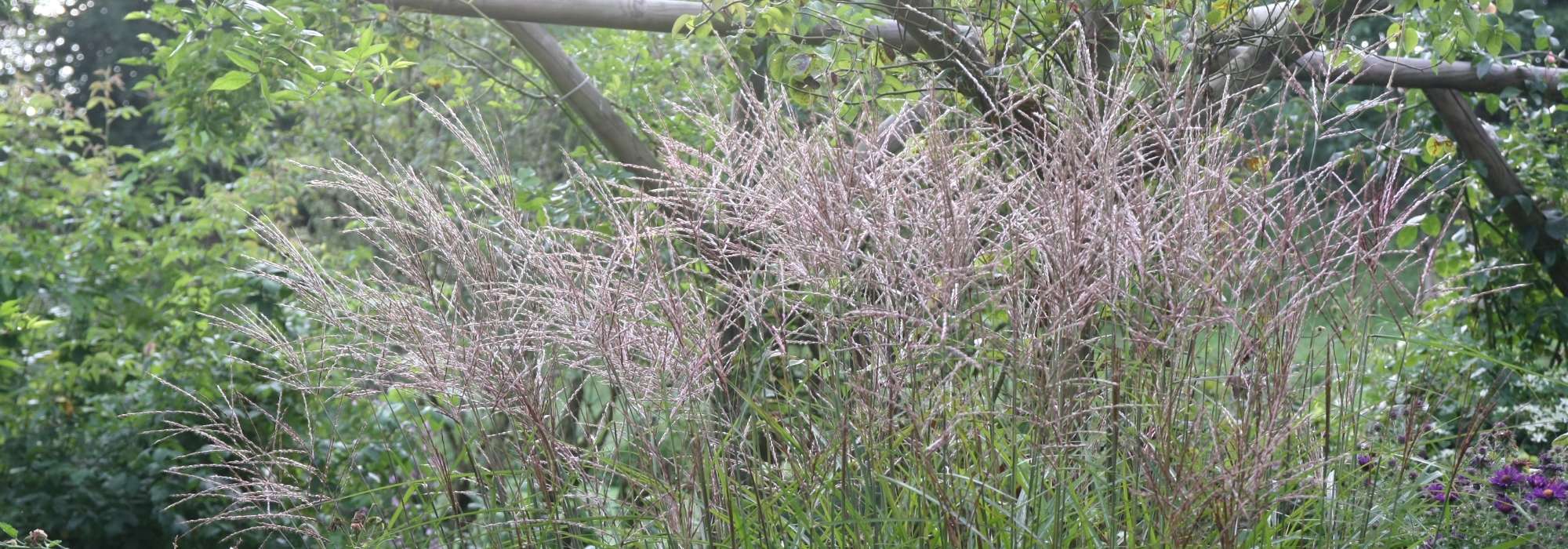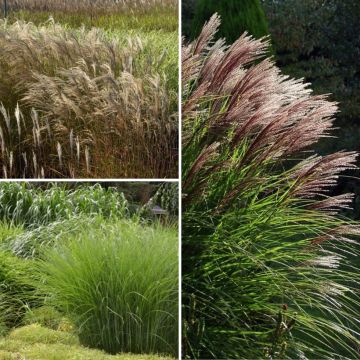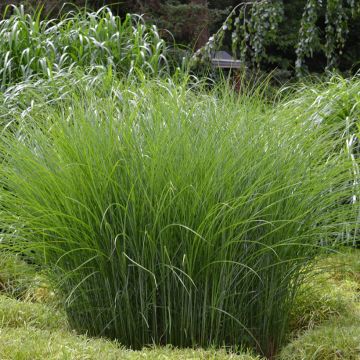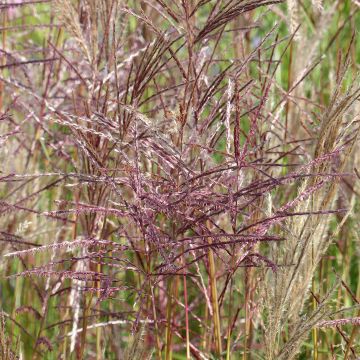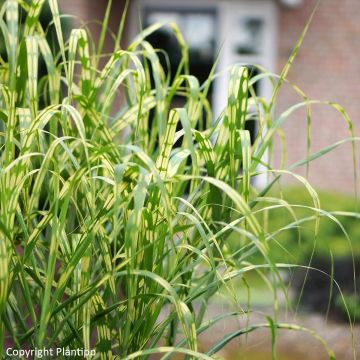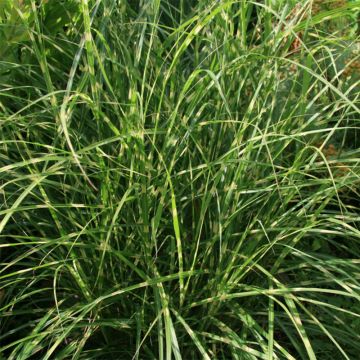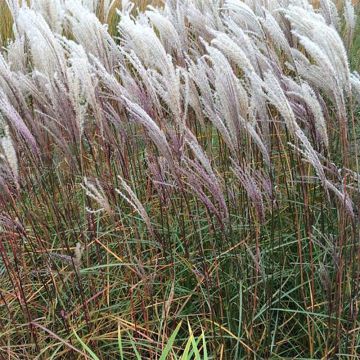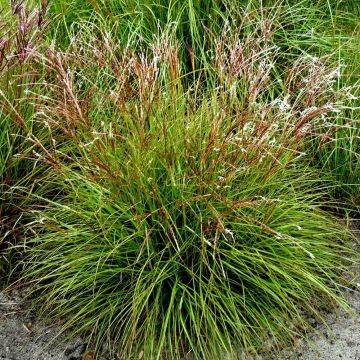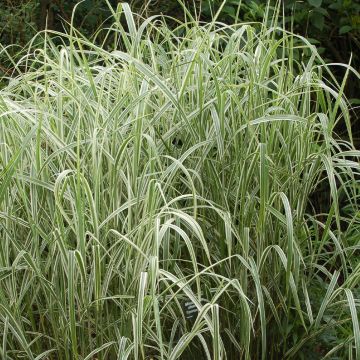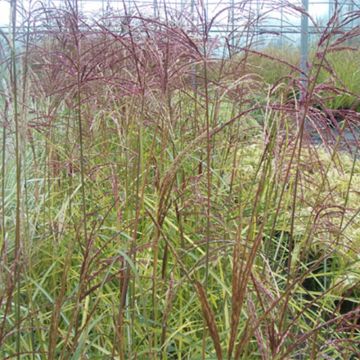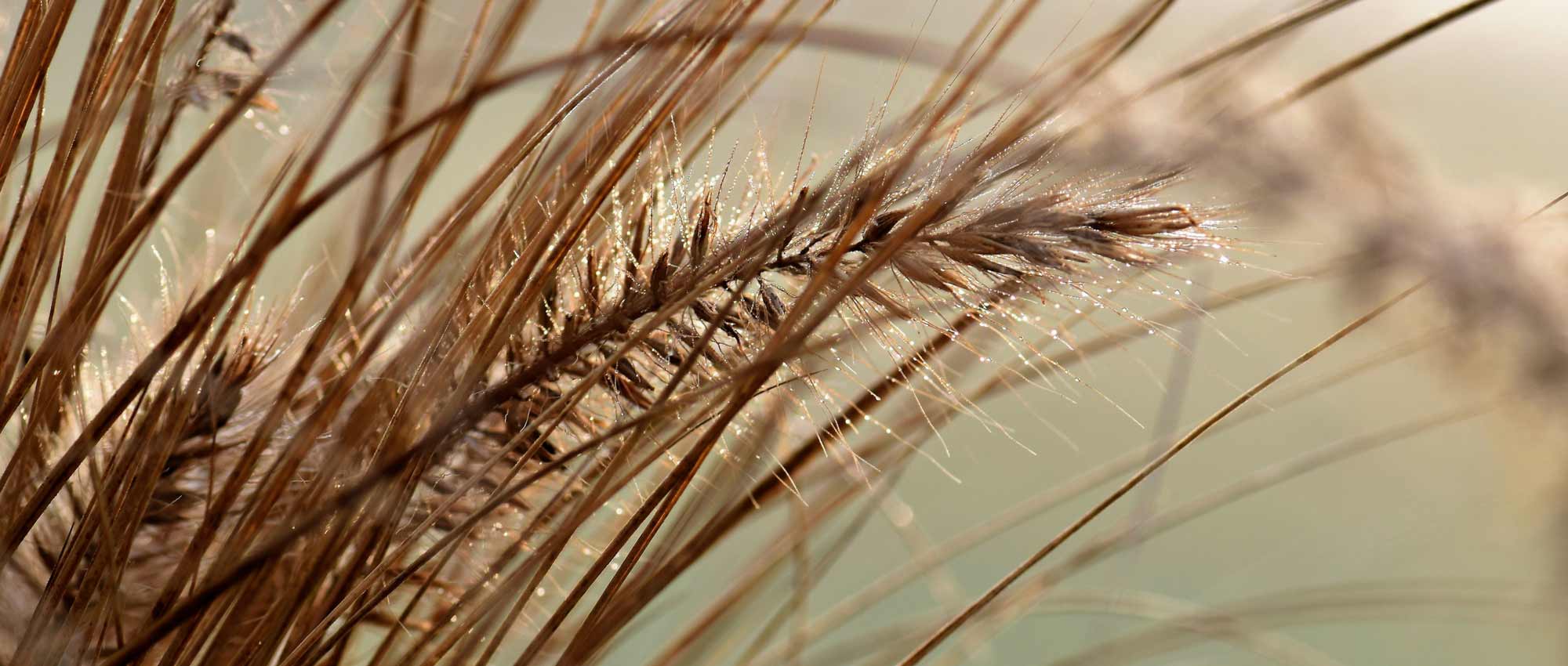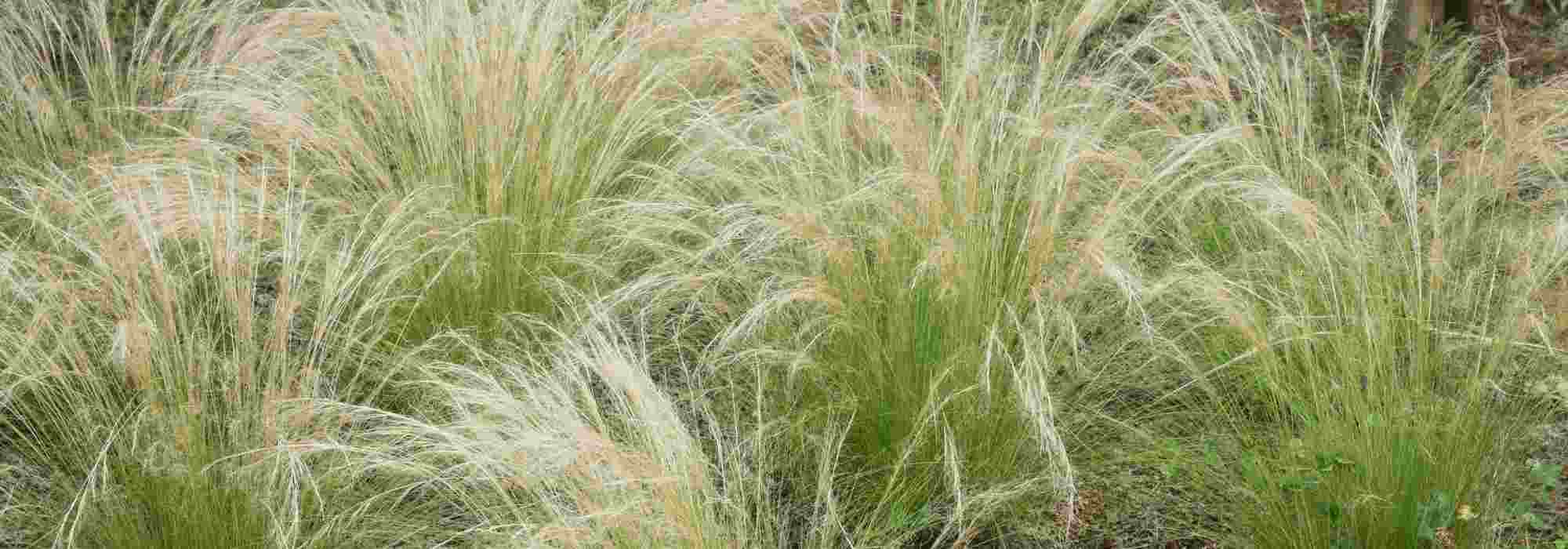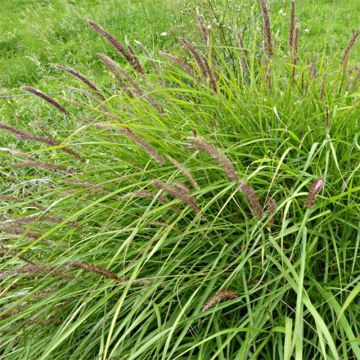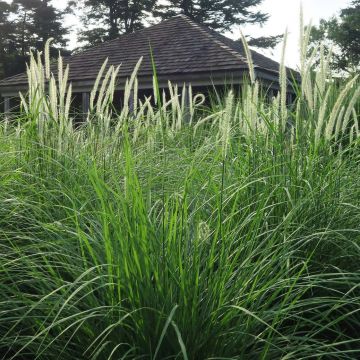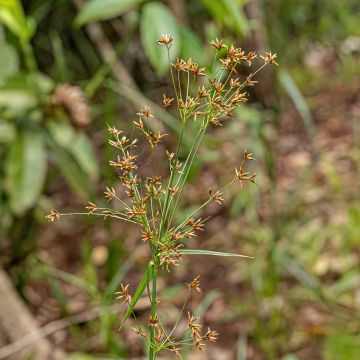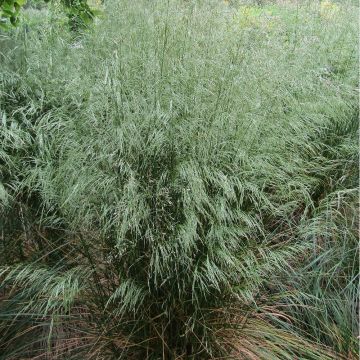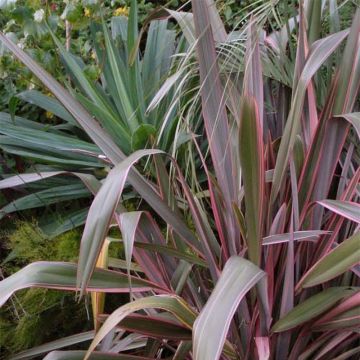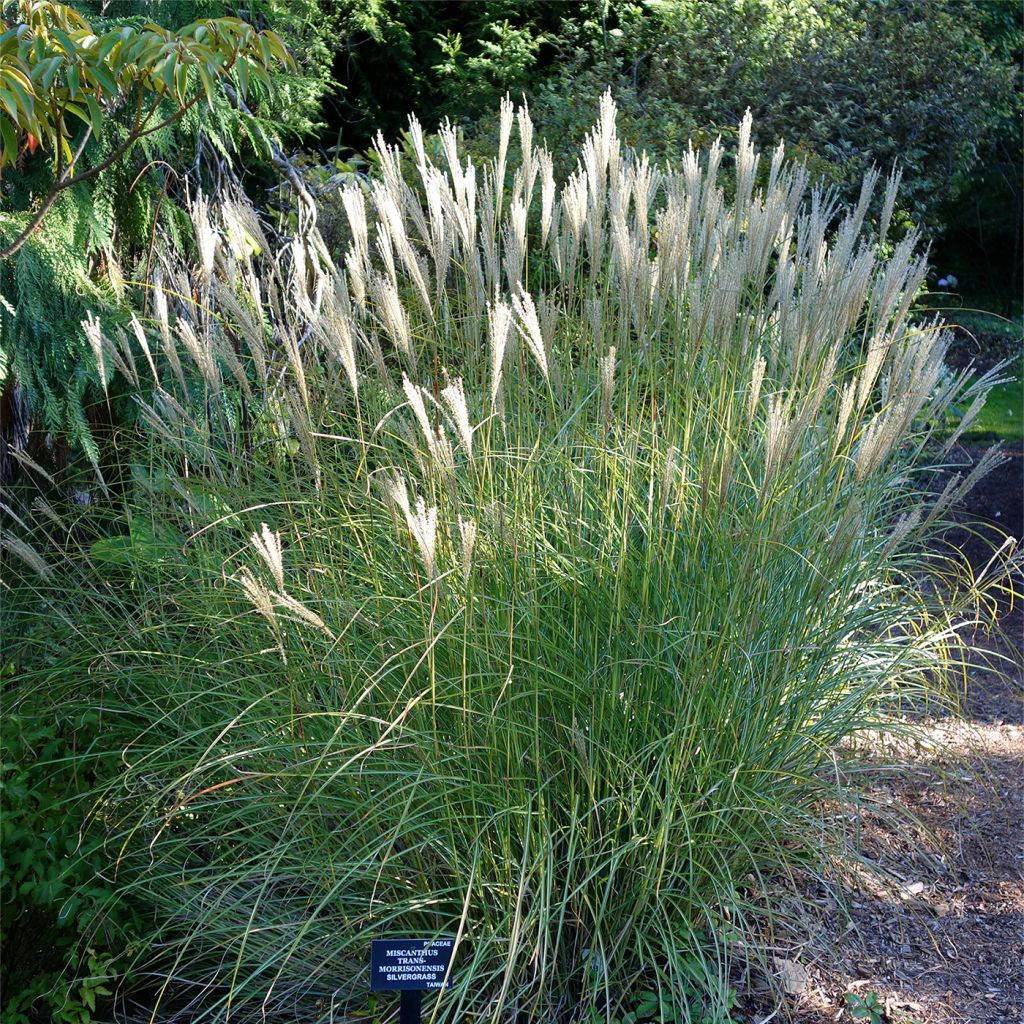

Miscanthus transmorrisonensis
Miscanthus transmorrisonensis
Miscanthus transmorrisonensis
Evergreen Eulalia
You have to be patient, but 4 years after planting, they are magnificent, resistant to cold and drought. I prune them to 30 cm from the soil in spring and they come back even more beautiful.
Edith, 28/07/2025
Special offer!
Receive a €20 voucher for any order over €90 (excluding delivery costs, credit notes, and plastic-free options)!
1- Add your favorite plants to your cart.
2- Once you have reached €90, confirm your order (you can even choose the delivery date!).
3- As soon as your order is shipped, you will receive an email containing your voucher code, valid for 3 months (90 days).
Your voucher is unique and can only be used once, for any order with a minimum value of €20, excluding delivery costs.
Can be combined with other current offers, non-divisible and non-refundable.
Home or relay delivery (depending on size and destination)
Schedule delivery date,
and select date in basket
This plant carries a 12 months recovery warranty
More information
We guarantee the quality of our plants for a full growing cycle, and will replace at our expense any plant that fails to recover under normal climatic and planting conditions.
Would this plant suit my garden?
Set up your Plantfit profile →
Description
Miscanthus transmorrisonensis, also known as Taiwanese silver grass or Eulalia, has almost evergreen foliage and a silky cascade of feathery silver flower spikes in late summer. It is a large ornamental grass with which needs space to develop its dense tufted foliage. Its strong, wild, architectural presence fits in gardens of all styles, integrating into hedgerows or standing on the terrace in large pots. Simply plant it in the sun in deep and fertile soil moisture-retaining in summer.
Miscanthus transmorrisonensis is a perennial plant of the Poaceae family, originating from Taiwan, where it is found on grassy slopes and in open areas at high altitudes. It forms a dense and flexible, not invasive tuft, 200 cm (79in) high when flowering, 100 cm (39in) for the foliage, and will occupy 100 cm (39in) of ground space. Its growth is quite rapid in fertile soil. The foliage is green for most of the year (until January) and consists of narrow, ribbon-like, deep green leaves. Flowering begins in August, well above the foliage, at the end of numerous slender stalks. They start as surprising crimson-red floral buds which look a bit like caterpillars and open into golden flowers. They then elongate dramatically into silky spikes, turning silver when mature. This plant has one of the most beautiful flowers in the Miscanthus genus.
The Taiwanese silver grass is very ornamental and deserves to be given some space to express its full potential. It can be used in a group with shorter varieties or to form a screen with taller varieties such as Miscanthus 'goliath', at the edge of the garden. This beautiful green screen will enhance the look of flowering shrubs. Two plants placed face to face can mark an entrance in an original and natural way. Take advantage of its fountain-like shape on a slightly elevated area, such as a large slope or incline, combined with autumn blooms of asters (Aster laevis Calliope, Aster turbinellus, Aster cordifolius) or sunflowers (Helianthus maximiliani, Helianthus salicifolius, Helianthus atrorubens...). It pairs well with perovskias and Stipa arundinacea, autumn daisies, Japanese anemones, and perennial chrysanthemums. In winter, their copper-coloured foliage is beautiful covered in frost.
Miscanthus transmorrisonensis in pictures


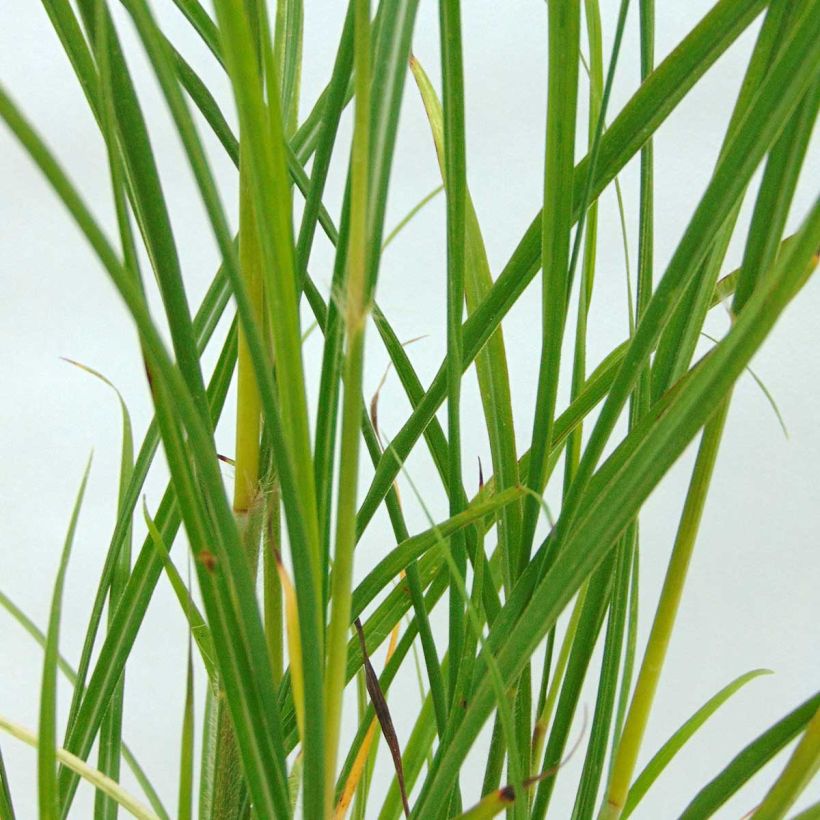



Flowering
Foliage
Plant habit
Botanical data
Miscanthus
transmorrisonensis
Poaceae
Evergreen Eulalia
Southeast Asia
Other Miscanthus
View all →Planting and care
Miscanthus transmorrisonensis thrives in warm exposures and healthy, rich, deep soil, well-drained but moist in the summer. It can tolerate poor soils, but its growth will be slower and less spectacular. Prune the faded flower stems in spring to avoid exhausting the plant.
Planting period
Intended location
Care
Planting & care advice
-
, onOrder confirmed
Reply from on Promesse de fleurs
Similar products
Haven't found what you were looking for?
Hardiness is the lowest winter temperature a plant can endure without suffering serious damage or even dying. However, hardiness is affected by location (a sheltered area, such as a patio), protection (winter cover) and soil type (hardiness is improved by well-drained soil).

Photo Sharing Terms & Conditions
In order to encourage gardeners to interact and share their experiences, Promesse de fleurs offers various media enabling content to be uploaded onto its Site - in particular via the ‘Photo sharing’ module.
The User agrees to refrain from:
- Posting any content that is illegal, prejudicial, insulting, racist, inciteful to hatred, revisionist, contrary to public decency, that infringes on privacy or on the privacy rights of third parties, in particular the publicity rights of persons and goods, intellectual property rights, or the right to privacy.
- Submitting content on behalf of a third party;
- Impersonate the identity of a third party and/or publish any personal information about a third party;
In general, the User undertakes to refrain from any unethical behaviour.
All Content (in particular text, comments, files, images, photos, videos, creative works, etc.), which may be subject to property or intellectual property rights, image or other private rights, shall remain the property of the User, subject to the limited rights granted by the terms of the licence granted by Promesse de fleurs as stated below. Users are at liberty to publish or not to publish such Content on the Site, notably via the ‘Photo Sharing’ facility, and accept that this Content shall be made public and freely accessible, notably on the Internet.
Users further acknowledge, undertake to have ,and guarantee that they hold all necessary rights and permissions to publish such material on the Site, in particular with regard to the legislation in force pertaining to any privacy, property, intellectual property, image, or contractual rights, or rights of any other nature. By publishing such Content on the Site, Users acknowledge accepting full liability as publishers of the Content within the meaning of the law, and grant Promesse de fleurs, free of charge, an inclusive, worldwide licence for the said Content for the entire duration of its publication, including all reproduction, representation, up/downloading, displaying, performing, transmission, and storage rights.
Users also grant permission for their name to be linked to the Content and accept that this link may not always be made available.
By engaging in posting material, Users consent to their Content becoming automatically accessible on the Internet, in particular on other sites and/or blogs and/or web pages of the Promesse de fleurs site, including in particular social pages and the Promesse de fleurs catalogue.
Users may secure the removal of entrusted content free of charge by issuing a simple request via our contact form.
The flowering period indicated on our website applies to countries and regions located in USDA zone 8 (France, the United Kingdom, Ireland, the Netherlands, etc.)
It will vary according to where you live:
- In zones 9 to 10 (Italy, Spain, Greece, etc.), flowering will occur about 2 to 4 weeks earlier.
- In zones 6 to 7 (Germany, Poland, Slovenia, and lower mountainous regions), flowering will be delayed by 2 to 3 weeks.
- In zone 5 (Central Europe, Scandinavia), blooming will be delayed by 3 to 5 weeks.
In temperate climates, pruning of spring-flowering shrubs (forsythia, spireas, etc.) should be done just after flowering.
Pruning of summer-flowering shrubs (Indian Lilac, Perovskia, etc.) can be done in winter or spring.
In cold regions as well as with frost-sensitive plants, avoid pruning too early when severe frosts may still occur.
The planting period indicated on our website applies to countries and regions located in USDA zone 8 (France, United Kingdom, Ireland, Netherlands).
It will vary according to where you live:
- In Mediterranean zones (Marseille, Madrid, Milan, etc.), autumn and winter are the best planting periods.
- In continental zones (Strasbourg, Munich, Vienna, etc.), delay planting by 2 to 3 weeks in spring and bring it forward by 2 to 4 weeks in autumn.
- In mountainous regions (the Alps, Pyrenees, Carpathians, etc.), it is best to plant in late spring (May-June) or late summer (August-September).
The harvesting period indicated on our website applies to countries and regions in USDA zone 8 (France, England, Ireland, the Netherlands).
In colder areas (Scandinavia, Poland, Austria...) fruit and vegetable harvests are likely to be delayed by 3-4 weeks.
In warmer areas (Italy, Spain, Greece, etc.), harvesting will probably take place earlier, depending on weather conditions.
The sowing periods indicated on our website apply to countries and regions within USDA Zone 8 (France, UK, Ireland, Netherlands).
In colder areas (Scandinavia, Poland, Austria...), delay any outdoor sowing by 3-4 weeks, or sow under glass.
In warmer climes (Italy, Spain, Greece, etc.), bring outdoor sowing forward by a few weeks.






























